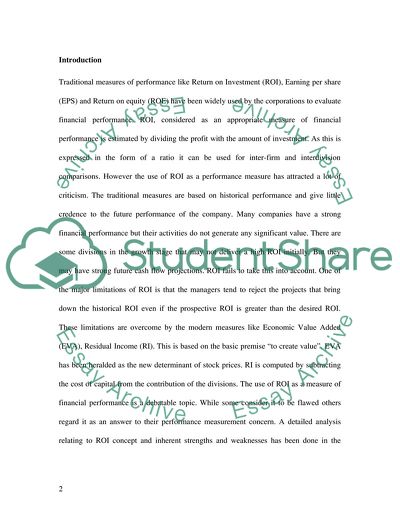Cite this document
(Return on Investment Essay Example | Topics and Well Written Essays - 4250 words, n.d.)
Return on Investment Essay Example | Topics and Well Written Essays - 4250 words. Retrieved from https://studentshare.org/finance-accounting/1739575-assignment-task-critically-examine-the-relative-strengths-and-weaknesses-of-return-on-investment-roi-as-a-measure-of-divisional-performance
Return on Investment Essay Example | Topics and Well Written Essays - 4250 words. Retrieved from https://studentshare.org/finance-accounting/1739575-assignment-task-critically-examine-the-relative-strengths-and-weaknesses-of-return-on-investment-roi-as-a-measure-of-divisional-performance
(Return on Investment Essay Example | Topics and Well Written Essays - 4250 Words)
Return on Investment Essay Example | Topics and Well Written Essays - 4250 Words. https://studentshare.org/finance-accounting/1739575-assignment-task-critically-examine-the-relative-strengths-and-weaknesses-of-return-on-investment-roi-as-a-measure-of-divisional-performance.
Return on Investment Essay Example | Topics and Well Written Essays - 4250 Words. https://studentshare.org/finance-accounting/1739575-assignment-task-critically-examine-the-relative-strengths-and-weaknesses-of-return-on-investment-roi-as-a-measure-of-divisional-performance.
“Return on Investment Essay Example | Topics and Well Written Essays - 4250 Words”, n.d. https://studentshare.org/finance-accounting/1739575-assignment-task-critically-examine-the-relative-strengths-and-weaknesses-of-return-on-investment-roi-as-a-measure-of-divisional-performance.


